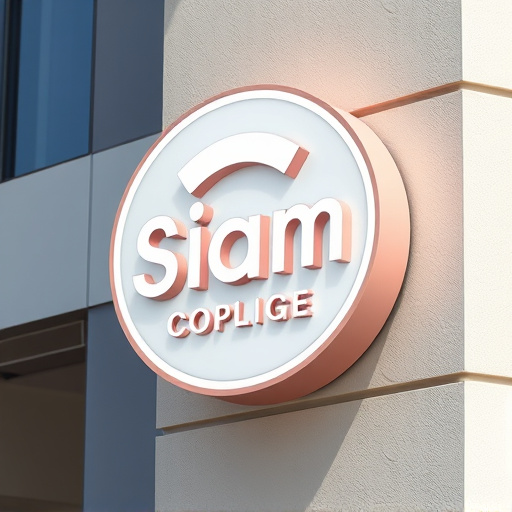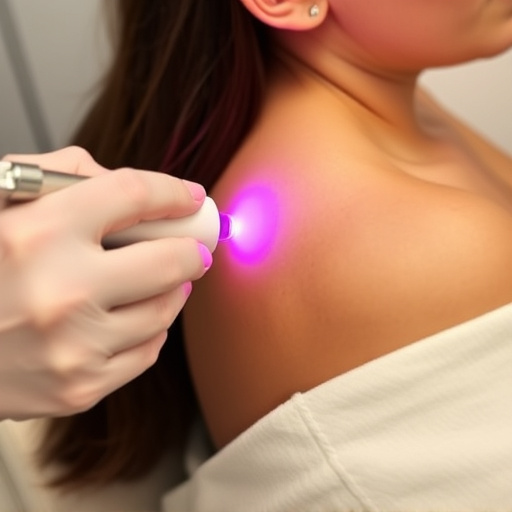Skin tags, caused by collagen entanglement, are common and harmless but can be removed effectively. Non-surgical methods include cryotherapy, laser treatments, and topical creams. Dermatologists offer personalized solutions. Post-removal care involves cleaning, moisturizing, avoiding harsh scrubs, and using gentle exfoliants for minimal scarring and reduced redness.
Skin tags, those tiny, hanging bits of skin, might seem harmless but can cause discomfort and self-consciousness. This guide delves into effective skin tag removal methods with a focus on minimizing scarring and redness. We explore the causes and anatomy of these benign growths, providing insights into various non-surgical options. Additionally, we offer post-removal care tips to ensure optimal healing, leaving your skin smooth and scar-free. Discover safe, evidence-based strategies for achieving a clear and confident complexion.
- Understanding Skin Tags: Causes and Anatomy
- Non-Surgical Removal Methods: Safe Options
- Post-Removal Care: Minimizing Scarring and Redness
Understanding Skin Tags: Causes and Anatomy

Skin tags are small, soft skin growths that typically appear as hanging, loose pieces of skin. They can develop anywhere on the body but are most commonly found in areas where skin rubs against itself, such as the neck, armpits, and groin. While they are generally harmless, many individuals seek skin tag removal due to their unsightly appearance or discomfort.
The anatomy of a skin tag involves a stalk-like stem connecting it to the underlying skin. They form when collagen and elastin fibers in the skin become entangled, leading to the development of these small tags. Factors contributing to their formation include genetics, hormonal changes, obesity, and friction from clothing or jewelry. Interestingly, they are more prevalent in older adults, suggesting a potential role for aging in their development. For effective skin tag removal, understanding this simple anatomy is crucial as it helps determine suitable treatment methods, with options ranging from topical creams to surgical excision or even advanced procedures like laser hair removal and customized facials for comprehensive skin care.
Non-Surgical Removal Methods: Safe Options

When it comes to non-surgical skin tag removal, several safe and effective options are available that can minimize scarring and redness. Among these, cryotherapy stands out as a popular choice, where liquid nitrogen is used to freeze and remove tags quickly. This method is generally well-tolerated and reduces the risk of permanent damage or discolouration. Laser treatments are another non-invasive approach, employing targeted light energy to destroy skin tags without incisions. It’s ideal for smaller tags and can be combined with other facial treatments for comprehensive skincare.
Additionally, topical creams containing ingredients like salicylic acid or lactic acid can help exfoliate the skin and gradually remove tags over time. These anti-aging treatments not only address skin tag concerns but also improve overall skin texture and tone. For a more personalized approach, dermatologists offer custom solutions tailored to individual needs, ensuring safe and effective skin tag removal while addressing any underlying skin conditions.
Post-Removal Care: Minimizing Scarring and Redness

After successful skin tag removal, proper post-care is essential to minimize scarring and reduce redness. It’s crucial to keep the treated area clean and moisturized; a gentle cleanser and hydrating facial masks can help soothe and repair the skin. Avoid harsh scrubs or exfoliants that might irritate the sensitive skin, opt instead for soft, chemical exfoliants if desired.
Additionally, consider customized facials designed to alleviate redness and promote healthy skin healing. These treatments, combined with personalized skincare routines incorporating high-quality ingredients, can significantly reduce scarring potential. Remember, patience is key; it may take time for the skin to fully recover, so consistent care and avoiding further irritation are vital steps in achieving minimal scarring and a smoother complexion.
When it comes to skin tag removal, choosing safe and effective methods is essential to minimize scarring and redness. By understanding the causes and anatomy of these tags, you can make informed decisions about non-surgical options. Following proper post-removal care ensures optimal results, leaving your skin healthy and restored. Embrace these strategies for efficient skin tag removal, allowing you to enjoy a seamless, scar-free recovery.














